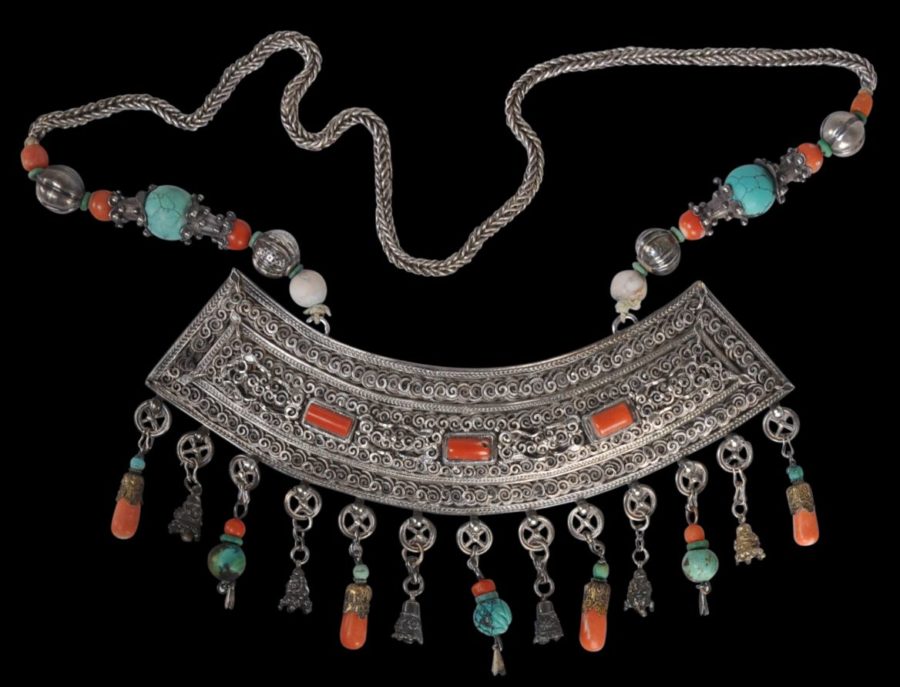This splendid, intricate necklace with a large pendant was meant for an aristocratic Khalkha Mongolian woman. Such women wore astonishing quantities of jewellery with elaborate headdresses of a type to rival that worn by the noble women of Lhasa.
It comprises a thick, woven silver chain with a series of spherical, gadrooned, silver beads; turquoise and pink coral beads and cylindrical silver beads with flared ends and applied granulation work. The beads are attached to the silver chain and pendant with native cotton twine. This is likely to be original.
The body of the pendant is decorated in high relief with applied, interlaced coils of flattened silver wire, and inset with segments of pink coral. The silver wire is arrayed in a cloud pattern.
A series of coral, silver and turquoise beads and bells are suspended from the pendant, via dharma wheel-like links. The tear-drop shaped coral beads have fine, gilded-silver filigree mounts. The central turquoise bead is carved.
The fashion in Mongolia was for light pink coral, whereas in Tibet, aristocratic women preferred dark red coral. Coral was believed by both to bring prosperity and luck, and even to prevent haemorrhages.
The Khalkha are the largest subgroup of the Mongol people. Aristocratic, married women particularly wore jewellery such as this example.
The necklace is wearable and in excellent condition.
References
Beringen, J. et al, The Art of Silver Jewellery: From the Minorities of China, the Golden Triangle, Mongolia and Tibet – The Rene van der Star Collection, Skira, 2006.
Berger, P., & T. Tse Bartholomew, Mongolia: The Legacy of Chinggis Khan, Thames & Hudson, 1995.
Borel, F., The Splendour of Ethnic Jewelry: From the Colette and Jean-Pierre Ghysels Collection, Thames & Hudson, 1994.
van Cutsem, A., A World of Head Ornaments: Africa, Asia Oceania, America, Skira, 2005.
Geoffrey-Schneiter, B., Bijoux des Toits du Monde de la Chine au Caucase, Foundation Baur, Musee des Artes D’Extreme-Orient/5 Continents, 2012.
Tsultem, N., Mongolian Arts and Crafts, State Publishing House, Ulan-Bator, 1987.





